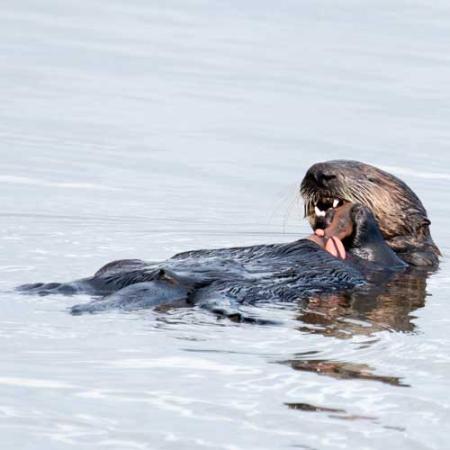There really is an overwhelming amount of information stored in these samples.
Alicia Godersky
University of Washington (UW) School of Aquatic and Fisheries Sciences graduate student Alicia Godersky aims to help fill in these gaps with her research. She is studying larval fishes collected in 2011 across Puget Sound and has arranged to have these specimens donated to the Burke Museum’s ichthyology collection.
Puget Sound is comprised of six basins separated by sills that slow the mixing of water between regions. Godersky is focusing on differences in the presence of fish larvae between these regions and if seasonal differences occur. Fish larvae are sensitive to temperature and other oceanographic conditions, and her data suggest that there are fish larvae in Puget Sound throughout the year, but peak production occurs in spring.
Godersky identified over 9,000 fish larvae for this project from 77 species. “There really is an overwhelming amount of information stored in these samples,” she said.
Pacific herring (Clupea pallasii) and Pacific sand lance (Ammodytes personatus) are two forage fish species with different life history strategies that are ecologically important as a food source within the Sound. Her research suggests that they both have multiple spawning periods that are not in sync with each other and may occur at different times in different basins, even within the same species.
Hood Canal Basin is a particularly important area to study, as it often experiences insufficient oxygen in the water column to sustain life. “The question of under what conditions larvae persist within Hood Canal is an interesting one,” Godersky explains.
She plans to look at oceanographic data, including dissolved oxygen content, to see if there is a correlation between the presence of larvae and oxygen within all the basins—but is particularly interested in the results from Hood Canal. Godersky aims to complete her master’s degree by the end of summer and is proud to have spent her time in the Burke’s ichthyology collection.
Learn more about Burke Museum research projects or see more from ichthyology.




